Are you planning to send a survey via email, but writing the subject line holds you back? Do you fear that any email subject lines you'd come up with would fail to engage your audience? If so, you’re not alone.
64% of recipients decide to open or delete emails based on subject lines. So, it's safe to assume the success of your email survey and its response rate does not only depend on the right type of survey and audience choice, but also on your ability to write catchy subject lines.
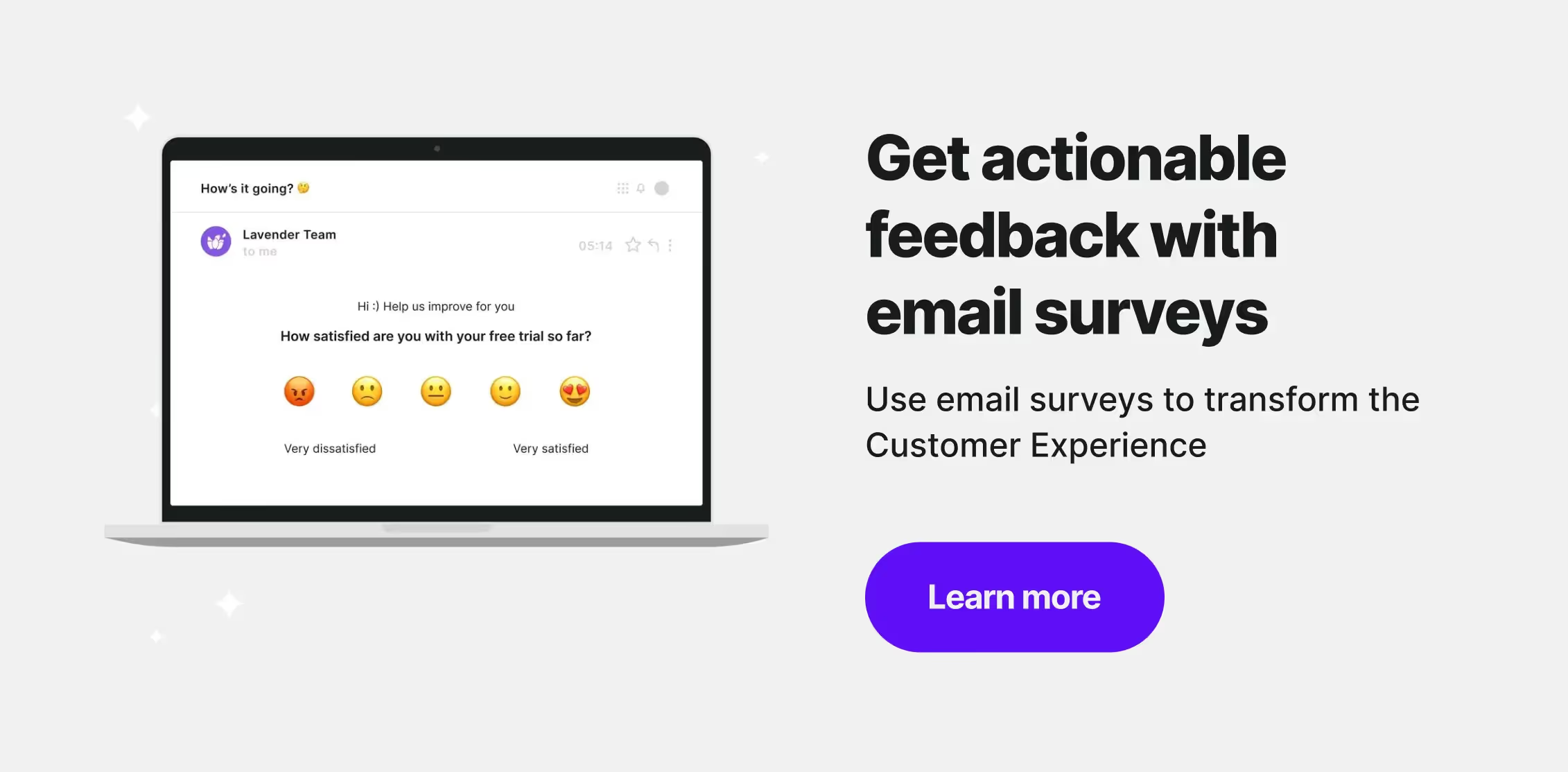
Why survey email subject lines affect response rate
You already know how many recipients open an email based on its subject line alone.
But there's more:
- The subject line is also the second most crucial factor in an email's success, right after the sender's name.
- 69% of people use the email's subject line to identify spam quickly. They skim it, looking for words that trigger their internal alarm. And if they find any, they bin the message right away. Spam filters also analyze subject lines in a similar way.
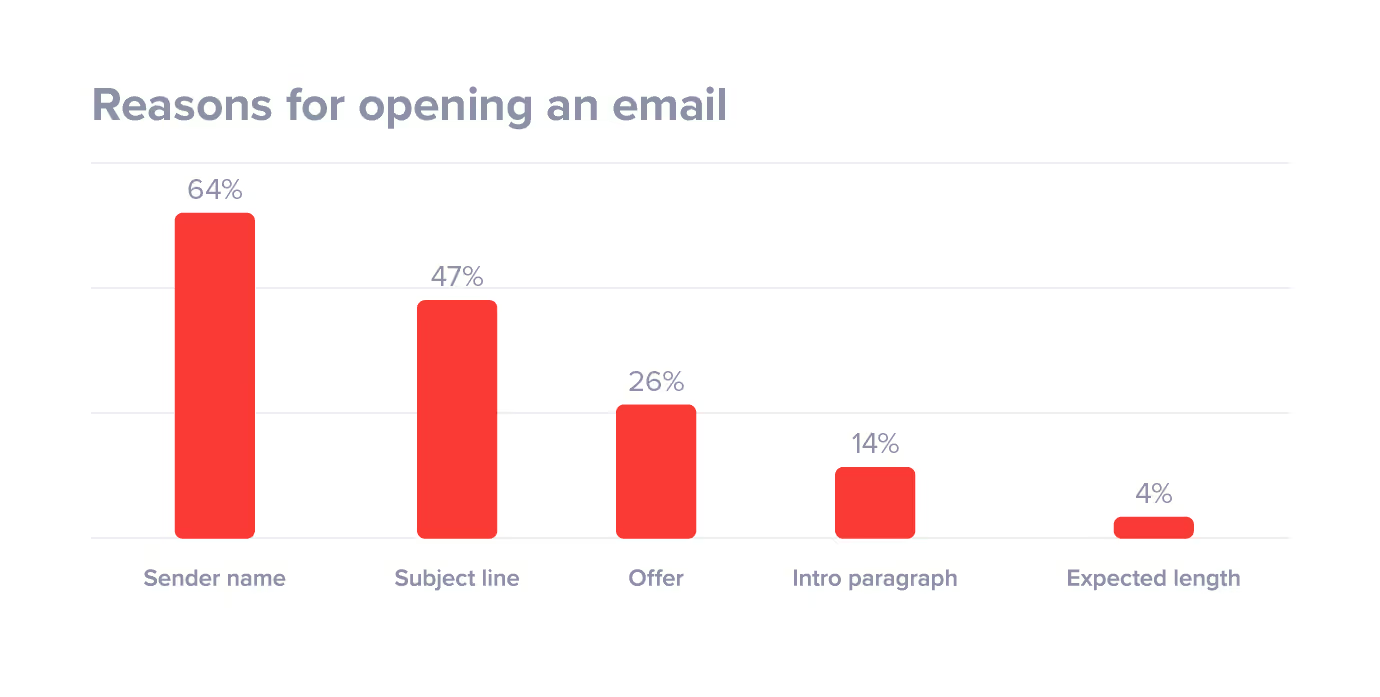
3. The length of your subject line can put a recipient off opening your message.
4. According to research, subject lines with six to ten words get the highest open rates.
Daunting as this piece of insight might be, it feels even more intimidating when you consider its effect on your entire campaign.
So, let's imagine you're sending an email survey to 1000 potential respondents. You have written a suboptimal subject line. Based on the data above, we could estimate that only 310 to 530 recipients would open your message. With a long subject line, that number might drop to 120 opens.
Now, let's consider the response rate. Based on our expertise here at Survicate, it is safe to say that the average email survey response rate is between 10 to 30%. So, with a weak survey subject line, you can expect only a maximum of between 93 and 159 survey responses from 1,000 emails.
Hardly impressive, right?
Now, let’s take a closer look at the factors that engage recipients and the subject line elements that increase the email open rates.
However, if you need to start sending email surveys right now, you can use this NPS survey template:
Factors that engage email survey recipients
1. Urgency
Urgency is about triggering our deeply rooted mechanisms. For example, when pressed for time, we instinctively suspend logic and take immediate action. In a subject line, urgency helps recipients decide to read your email.
To create a sense of urgency, add words that communicate the time restrictions of your survey. Here are the most effective ones:

Examples:
- "Urgent: Have we solved your problem?"
- "One more day left to subscribe to [a webinar]."
2. Personalization
Research studies agree that personalized subject lines perform best. Even including a recipient's name in the subject line can increase the open rate by up to 50%.
Here are other ways to personalize the subject line:
- Use the word you. We often use it as a substitute for someone's name - e.g., "Jon, could you help... ?"
- Address the recipient directly: "A quick favor?"
- Reference something relevant to the user, like their recent purchase: "You bought an iPad from us. How do you like it so far?"
For the best personalization in emails, you can start by segmenting your audiences. Here’s a free survey template created with this purpose in mind:
3. Incentives
If your company offers incentives (money, gifts, or vouchers) for completing a survey, you should also reference it in the subject line. Incentive-driven subject lines draw attention and convince the reader to open the email. However, worth noting is that they can also attract an irrelevant audience who might be in it for the incentive alone, so use this method with caution.
Examples:
- "Share Your Feedback. Get Extra Purchase Points."
- "You get a t-shirt. We get your feedback. Deal?"
4. Relevance
An average working person receives about 120 emails per day. Even if the number is a bit over the top for some of us, we can still agree that we're snowed under with messages. What it means is that your email survey must stand out in the recipient's inbox to get opened.
Another way to do it, apart from urgency or personalization, is by making it relevant to the recipient.
This means sending the right email at the right time. For example, you can send a sign-up experience survey immediately after someone signs up for your product. Here’s a template to start with:
You'll create a sense of relevance if you follow the steps below.
Trigger emotions
Make them feel:
- Curious—by asking "How did we do?"
- Excited—with "It's your call!"
- Unique—"We would love to know what you think!"
Reference something relevant to their lifestyle.
Associate the survey with a cause your target audience believes in. Promise to donate a specific amount to a charity for every survey filled by saying, for example: "Tell us what you think, and we'll donate to [a name of a charity] on your behalf."
How to write effective email survey subject lines
1. With clarity
For survey subject lines, clarity goes beyond just saying what the message is about. Your subject line mustn't interfere with your research goals.
For example, by asking: "Tell us why our support is awesome", you tell a recipient how to respond because you’re asking a biased question. As a result, you might never discover where your support efforts fall short.
Similarly, when assessing your service quality, you may feel tempted to write a subject line that focuses on happy customers only. But by doing so, you might fail to receive the full spectrum of customer satisfaction.
Speaking of which, you can quickly assess the levels of your customer satisfaction by using a CSAT survey. Here’s a handy template you can use for free:
An example of a clear subject line: "Jon, you're a frequent traveler. We need your input!"
An example of a vague subject line: "Share your travel experience with us."
2. By asking questions
Question-based subject lines help engage email recipients on many levels. They help attract our attention—we're wired to spot questions, after all. But also, they get a story started in a recipient's head. And in doing so, they draw them closer to your message.
However, to achieve such an effect, your question must include your survey's topic AND the recipient's emotions.
Example: "How do you use [a product]?"
For instance, you can try and use this survey template to identify users that are ready to upgrade and find out what features they are interested in.
3. Spice things up 🌶
Humor can turn an ordinary subject line into one that sparks the reader’s interest. You can write funny subject lines in many ways. Here are some examples:
- Take a funny twist at the object of your research: "Our heads hurt, but we still can't crack it. Will you help?"
- Replace certain words with emojis. They can spruce an email line and make it stand out even among tens of other messages. "The 😈 is in the detail, but we can't find any. Help!"
Don’t limit the humor to the subject line: add some fun to the surveys, too!
You can get started with a simple survey template such as this one:
4. Keep it short
Including fewer words in the subject line helps connect with the recipient faster. Why? Because you don't force them to read and analyze a long sentence. And in doing so, you can stimulate their emotional response more quickly.
A long subject line: "We can't figure out how to improve [a product]. Can you help?"
A short and sweet one: "We're not smart enough. Help improve [a product]!"
5. Be precise
We’re aware that you might not be able to use any of the strategies above. Brand guidelines, company policies, and many other factors might prevent you from using humor, emoji, or urgency.
But not everything is lost. Focus on connecting with recipients by clarifying who seeks their opinion and why. It’s worth mentioning that you can combine this approach with some of the ones described above.
Examples:
- "[A company] wants to hear from its customers."
- "Customer support feedback—[a company]"
- "We're looking for new product suggestions. Do you have any?"
Get even more opens and positive responses than your initial outreach email with a follow-up email subject line.
For example, if you think your users may be struggling with their onboarding, don’t just send an open-ended question about potential issues they may be having. Instead, send this survey:
Cheatsheet: best subject lines for email surveys
Here are 15 more examples of engaging subject lines.
- See what your customers are thinking with this survey!
- Make your voice heard
- What do you think about [x]?
- Share your opinion on [x]
- Have a say—fill in our survey now!
- Help us improve—a quick survey
- Complete our survey and get [reward]
- We value your feedback. Take our survey
- Your opinion matters. Complete our survey!
- Give us your insights: take our survey
- Quick question—we need your help
- Tell us how we're doing—take our survey
- Join the conversation—a quick survey inside!
- What would you change about [x]?
- Ready for the big reveal? Take our survey!
How to send successful email surveys
Email survey subject lines help you convince a potential respondent to open your email. We've shown you plenty of ways to do that in this post. But you also need to persuade them to take the survey, right? And that's no small feat. Luckily, there's an easy way to do that:
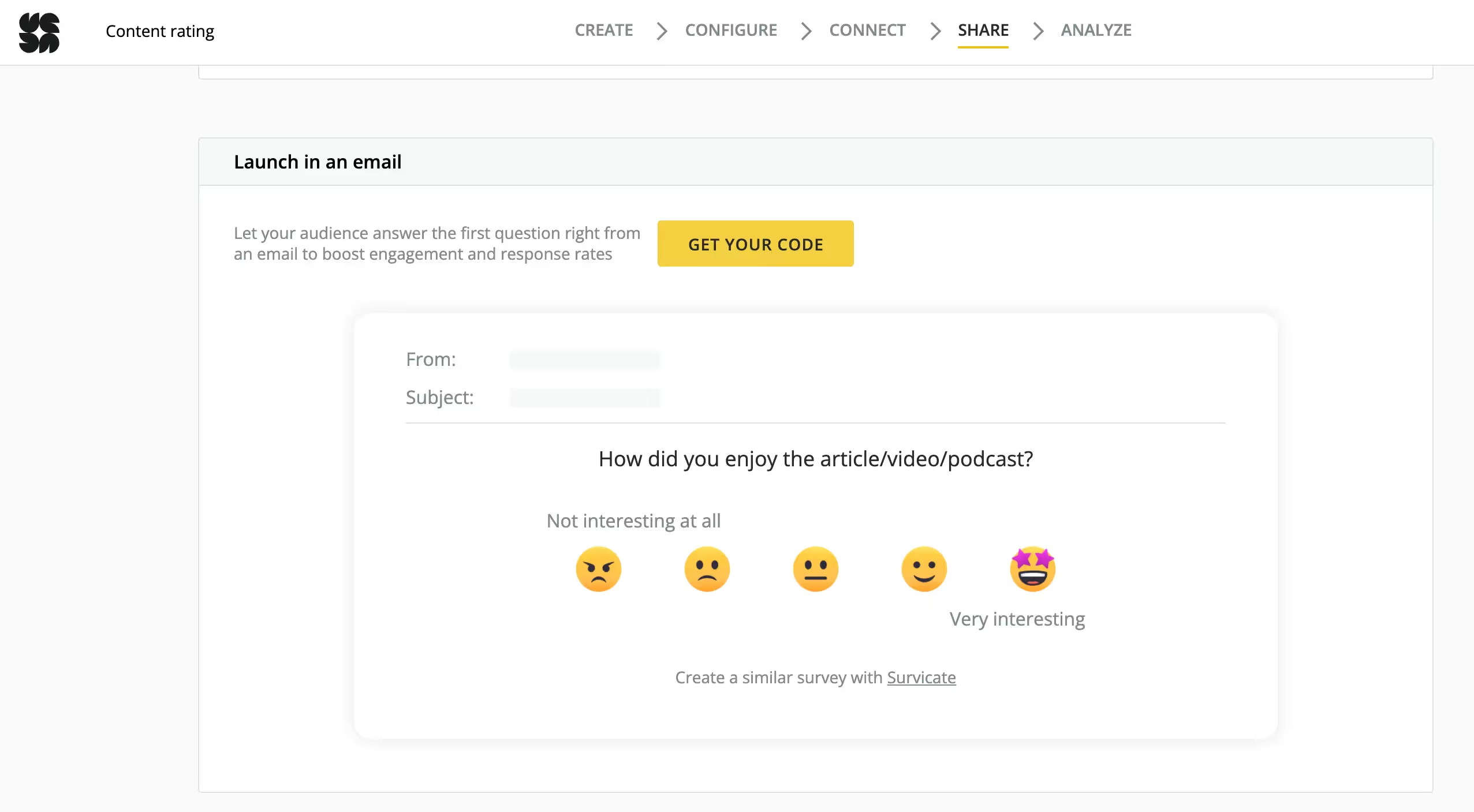
When you send someone a link to the survey, you have to rely on the email copy to persuade them to participate. But when you ask for their opinion right away, you can make them curious. They begin to wonder what other insights you might be asking for or what other thoughts they will be able to share, which will encourage them to act.
Are you interested in learning more? Take a look at our survey design checklist to set yourself up for success!
How to send surveys by email
Email surveys can be sent from email platforms such as Gmail or integrated with email marketing software or Customer Relationship Management (CRM) tools. Some of them include:
To send email surveys the right way, you need not one, but two tools that work well together. One is your survey software, and the other one is your email marketing tool. Luckily for you, Survicate does both.
Creating surveys with Survicate is a breeze thanks to a library of over 300 ready-to-use, customizable templates. Once your survey is created, you can distribute it with one of the many email marketing integrations available.
Speed up the process of gathering customer feedback via email and use one platform to create and send out your surveys. Sign up for Survicate's 10-day free trial today!

.avif)







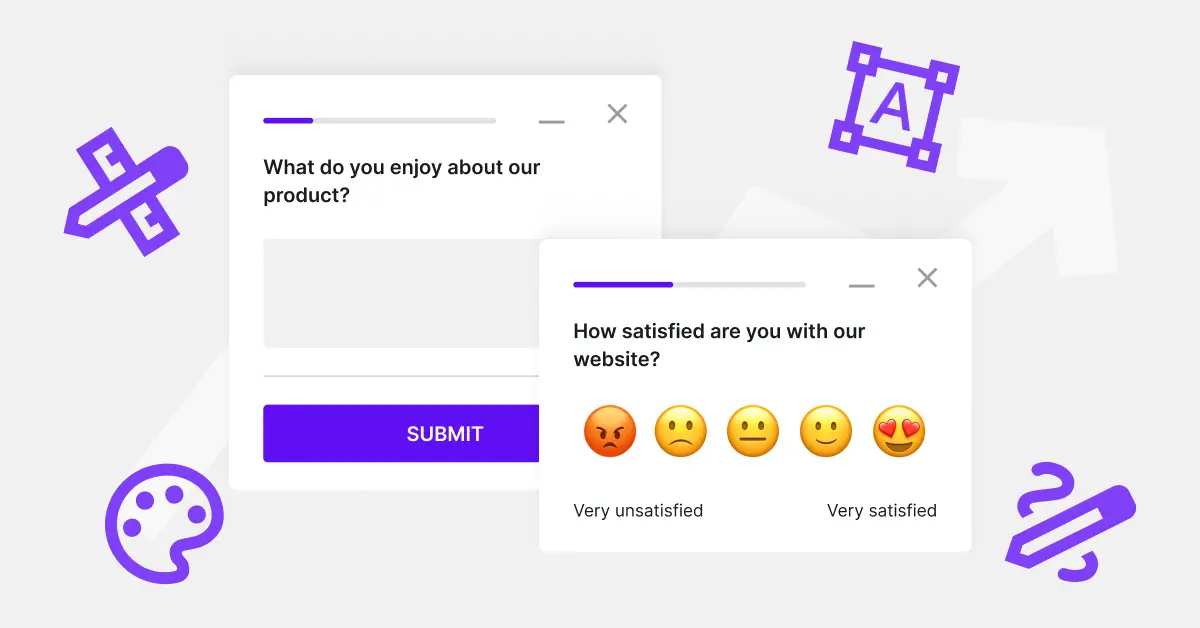
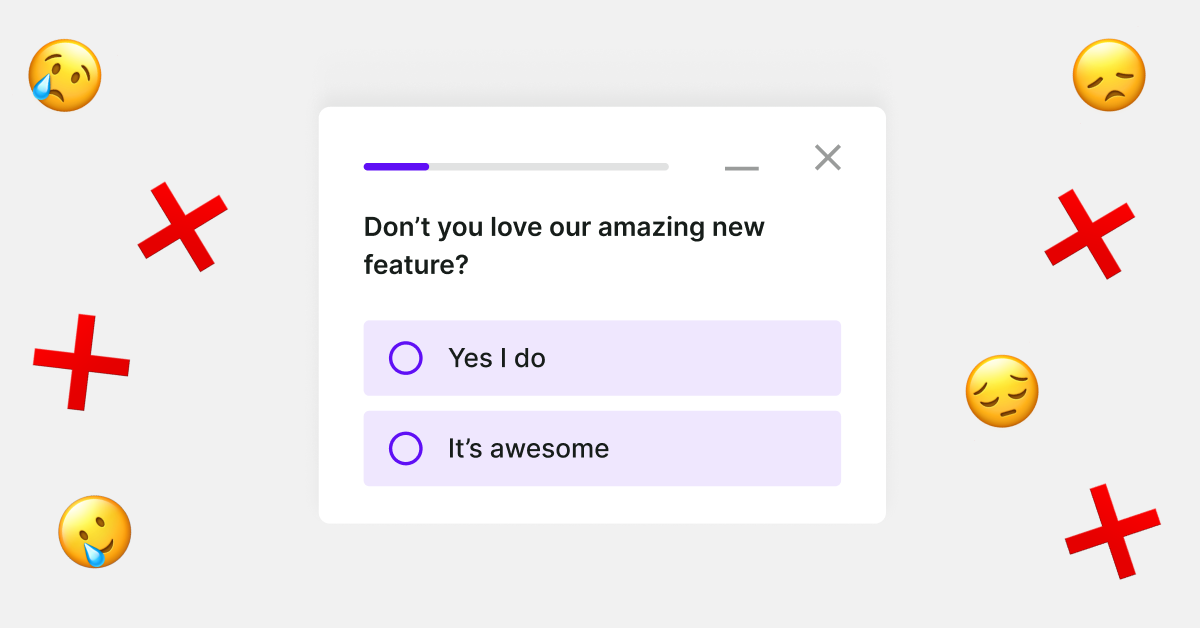
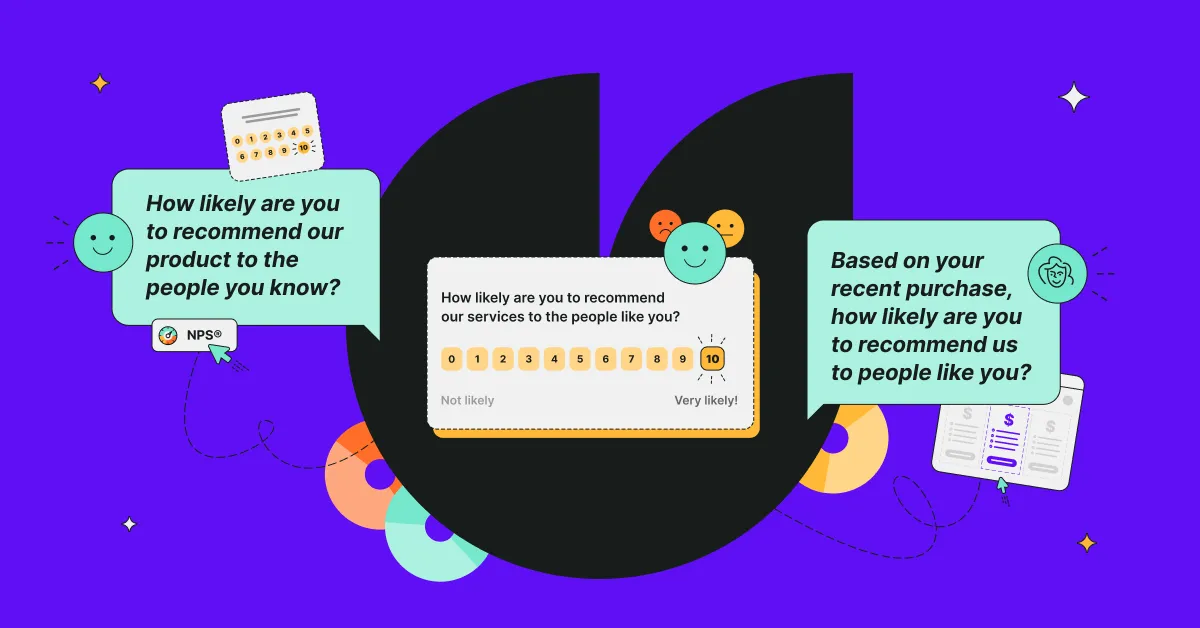
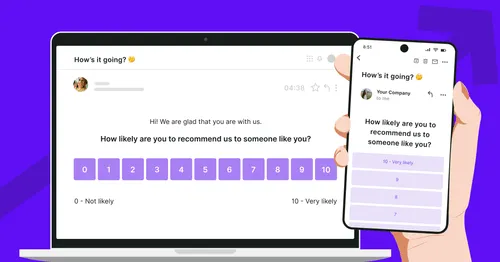
.svg)

.svg)



